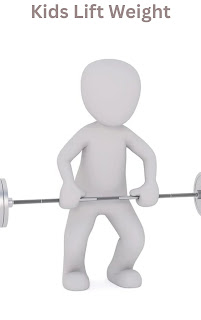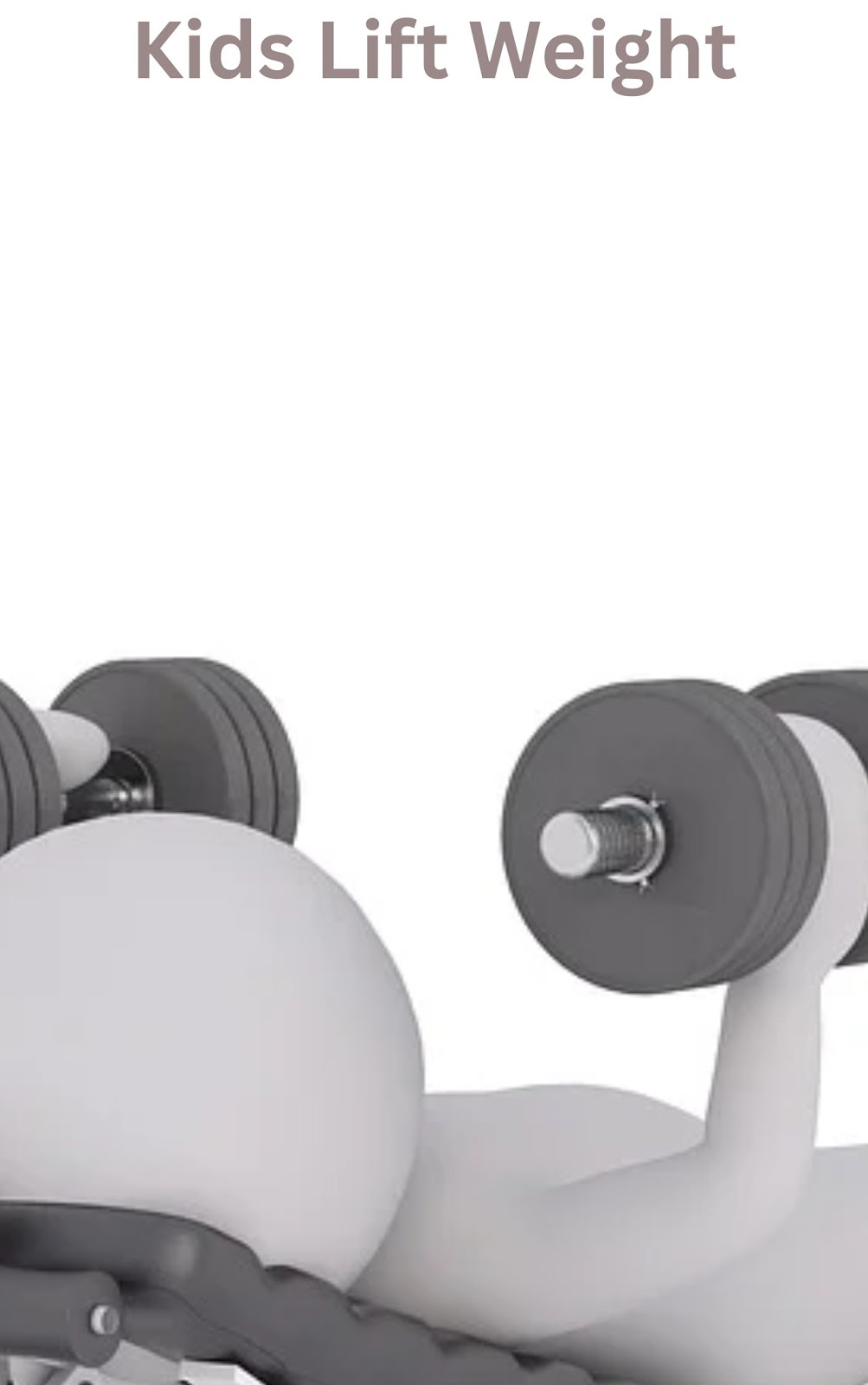Should Kids Lift Weights? An Inside Note
Whether kids should lift weights is one question that is guaranteed to raise some eyebrows among doctors, personal trainers, and parents. Fears of a growth slowdown as well as physical damage have been the primary concerns. But more and more, it's becoming apparent that, if planned and supervised, resistance training can be of tremendous benefit to teenagers.
 |
| Kids Lift Weights |
1. This memo attempts to provide a good general description of weightlifting based on teens' strengths and weaknesses, the possible benefits, the hazards, the safety measures, and the legislation.
Knowing the Slang: Resistance Training vs. Weightlifting
It is reasonable to distinguish between "weightlifting" and "resistance training." Olympic weightlifting, consisting of technically demanding and explosive lifts such as the snatch and clean & jerk, is very technical with much coaching and physical maturity.
2. Young children are generally not advised to perform this kind of training.
Resistance training, however, is a generic term for resistance exercise with external assistance for muscle growth. That can be heavyweight, bands, light weights, weight machines, or medicine balls.
3. All of the following information that is helpful to children, we're discussing well-age-appropriate, supervised resistance training programs.
Arguments Against Youth Weightlifting (and Myth-Busting):
Historically, arguments against youth weightlifting have been:
·
Stunted Growth: One of the longest-standing of all the myths is that weight lifting will hurt long-bone growth plates (epiphyseal plates) and cause stunted growth. Growth plates are made of cartilage and are more susceptible to being hurt by unstructured heavy lifting or heavy, high-impact movement than they are by structured resistance training with appropriate loads. Studies have consistently demonstrated that a well-designed program of resistance training will not hinder linear progress.
4. There are particular studies demonstrating it might actually be involved with bone mineral content, most significant in long-term bone health.
5. Risk for musculoskeletal injury is always a concern mutual to both parties. Even with any form of physical exercise, there is always some amount of risk for injury. Research, though, has shown that the incidence of injury in properly supervised youth resistance training programs is actually lower than some of the most traditional youth sports now, including basketball, football, and soccer.
 |
| Kids Lift Weights |
6. Risk must be minimized by proper supervision, proper instruction of technique, and programming in relation to age. Injuries would tend to result from overloading, poor posture, inadequate supervision, and over-straining one's limits.
Physical and Mental Maturity: There are some who believe that very young children are physically coordinated and mentally conscious enough to safely do resistance training exercises. While it seems that younger children will need to have more basic exercises and more supervision, even teenagers can learn how to properly execute basic resistance training movements. It is prudent to be instructed how to technique first before loading. Resistance training improves coordination, body awareness, and motor ability.
7.“Arguments in Favor of Youth Resistance Training (The Good Stuff)”
Resistance training, when done correctly, is extremely valuable to kids:
Increased Muscular Power and Strength: The big obvious one. Resistance training can actually measurably increase the power and the force production abilities of the child, and it will transfer pretty much one-to-one to sport function and the activities of daily living.
Enhanced Muscular Endurance: The children will have the capacity to undertake physical exercise for a prolonged time without tiring because of resistance training.
Improved Bone Mineral Density: As indicated earlier, resistance training will enhance bone and bone mineral density development and, therefore, decrease the risk of osteoporosis in old age.
8. “Better Body Composition” Resistance training will enhance lean body mass and reduce body fat, and thus result in better body composition.
9. “Better Motor Skill Functioning” Resistance training enhances coordination, balance, and overall motor function.
10. Education in body awareness and movement skills focuses on proper lifting technique.
11. “Prevention of Injury” Resistance training in itself prevents injury by contracting and hardening the connective tissue that encases muscle and joints, resulting in a stronger, more solid support and stability.
12. It is best suited for high-impact sports athletes.
Improved Psychological Well-being: Resistance training improves self-confidence, self-esteem, and body image.
13. It also improves a sense of achievement and self-control.
Improved Sport Performance: In young athletes, resistance training additionally has the advantage of being competitive at the world-class level with improved power, speed, and agility.
14. “Developing Healthy Habits for Life” Acquainting kids with resistance training in a positive, enjoyable way can be worth a lifetime of exercise and healthy lifestyle enjoyment.
Safety Protocols and Best Practices: For the most benefit to be derived without lessening the possible risk of resistance training in kids, strict procedures of safety procedures should be followed:
Qualified Supervision: All sessions of resistance training will be under the supervision of qualified staff knowledgeable about youth physiology and proper training technique. Qualified staff will include certified strength and conditioning specialists, physical therapists, or veteran coaches.
Good Technique: Employ more good techniques than the transferred load.
15. Practice basic movement patterns first before gradually progressing to slow increases in load. Begin with body weight movement and not more than light external loads.
Age-Appropriate Programming: Programmes need to be structured according to the age, level of maturity, and training objectives of the child. Employ multi-joint exercises, which target more than one muscle group simultaneously, with lighter weights with higher repetitions in the first stage.
Progressive Overload: Gradually increase by weight, sets, or repetitions based on the adaptation of the child to the training stimulus.
16. Avoid sudden training intensity increases.
Proper Warm-up and Cool-down: Provide a dynamic warm-up to prepare the body for exercise and a static cool-down to increase flexibility as well as reduce muscle soreness.
17. “Proper Equipment” Utilize equipment of proper age for the child, in proper condition, and size proportionate to the child.
Listen to the Body: Teach children to listen and warn an adult if sore or aching when they move. Remind them to slow down if they hurt themselves.
Hydration and Nutrition: Expect to be kept hydrated and restocked to help build muscle and recover.
Fun and Engagement Focus: Create enjoyable and participative training sessions to promote ongoing engagement. Engage in games and built-in exercises to develop interest.
Medical Clearance: Have them cleared with their pediatrician by getting all kids cleared of any hidden medical ailments prior to embarking on a resistance training regimen.
Conclusion
The idea that weight lifting is ever unsafe for kids is a misinformed, poorly educated myth. Used correctly by trained users and properly applied regarding a child's age, resistance training can be extremely safe and of considerable benefit for kids and children in general. It offers an enormous array of physical, physiologic, and psychologic advantages ranging from enhanced strength and bone mineralization density to augmented motor performance and self-concept.
The solution is to shift the emphasis from weight lifting to proper form, overload, and professional instruction. By clearing up myths and seeing first-rate safety practice in action, we can enable young people to derive value and benefit from the numerous strengths of resistance training and establish a lifelong habit. Rather than phrasing the question as "Should kids use weights?" the real question is so straight out phrased as "How do we get kids involved in effective and safe programs of resistance training?" And the answer is education, qualified coaching, and checking on giving first priority to outstanding technique and principles of training unique to the age.

